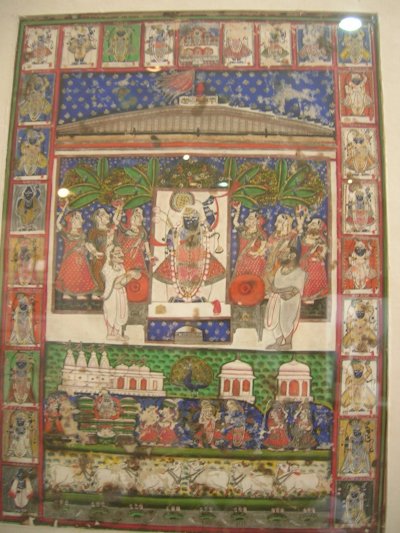Bhagavadgita on Food
by Jyotsna Kamat
First Online: June 07, 2010
Page Last Updated: December 07, 2024
I am just recovering from a stomach infection, a very common summer ailment in India. While resting and observing diet, my thoughts went back as to how our website tried to highlight varieties of Indian cuisine and the number of colorful pictures accompanying them. My musings went further back. Our ancients tried to analyse food varieties not only content wise, but quality-wise giving a philosophical bent. For them food was life itself (annam vai pranah). I was reminded of the four verses (7th to 10th) of the 17th chapter of Bhagavadgita or simply Gita, where it deals with classification of food briefly. Gita refers to three categories, for many walks of life.
These are 1) Sattvic 2) Rajasic 3) Tamasic. In the matter of food also, these three categories are mentioned in brief.
These are:-
- Sattvic food, which is natural sweet, juicy, greasy and agreeable. This provides strength, stability and energy.
- Rajsic quality, is bitter, hot, pungent sour and saline.
- Tamasic variety consists of dry, stale food cooked much earlier (yatayamam), without taste but with strong smell.
Gita further elucidates the nature or gunas, a person develops while consuming this three-type-food. Sattvic (involving Sattva) leads to health, brightness, steadiness and happiness. Rajasic (involving Rajas) leads to passion, aggression, desire and attachment. Tamasic (involving Tamas) leads to ignorance indolence and lethargy.
The holy text of Gita consists of pithy and simple verses, but with most meaningful philosophical or spiritual content. It may mean different to a yogi (recluse) an academician or a simple householder, providing lot of room for interpretation. In the huge subcontinent of India, staple food varies from region to region and common interest was kept in mind when rules were formed. India in olden days never lacked green vegetation, milk or fruit -varieties. Hence Sattvic type of food, which was energizing was readily and easily available. Hard working classes, took course to coarse grains, meat, spices and pungent items which came under Rajasic category, to have more nourishment and extra energy. Hindu holy texts including shastras donot forbid consumption of certain meat, and we may surmise that Gita also does not distinguish between vegetarian and non-vegetarian food so far it was clean, healthy and nutritious, keeping passion and aggressive nature in control which are increased by consuming Rajasic food.
Vikas Kamat/Kamat's Potpourri
Annakoota Food Festival
Nathdwara school of painting, 19th century A.D. depicts Krishna's Food
The third and last category needs slight explanation. The Tamasic element consists of dry, stale and stinking items. Gita uses a strong word amedhya (filthy or putrid) to the quality, Tamasic food consists of manufacture of illicit liquour prevails in India wherein go addition of all amedhya items. To have a "kick" and quick result, many fermenting, bad smelled, unclean and harmful things are mixed causing innumerable deaths after consuming it. Dried but rotten fish and meat are side dishes. People who survive turn inactive, indolent and lethargic.
Gita lays stress on moderation even when the food is clean, hygienic and nourishing. 16th and 17th verses of chapter VI state "Yoga is not possible for him who eats too much, nor for him, who does not eat at all. Yoga becomes painless to him who is moderate in eating, recreation, sleep and wakefulness".
Thus the "song celestial" or Bhagavadgita provides guide lines not only to those who strive for higher spiritual plane (Yogis) but to common house-holders as well, to lead a disciplined life.
See Also:
- The Song Celestial -- The Bhagavad-Gita is Hinduism in a nutshell. A commentary on the sacred poem.
- Festival Foods of India

